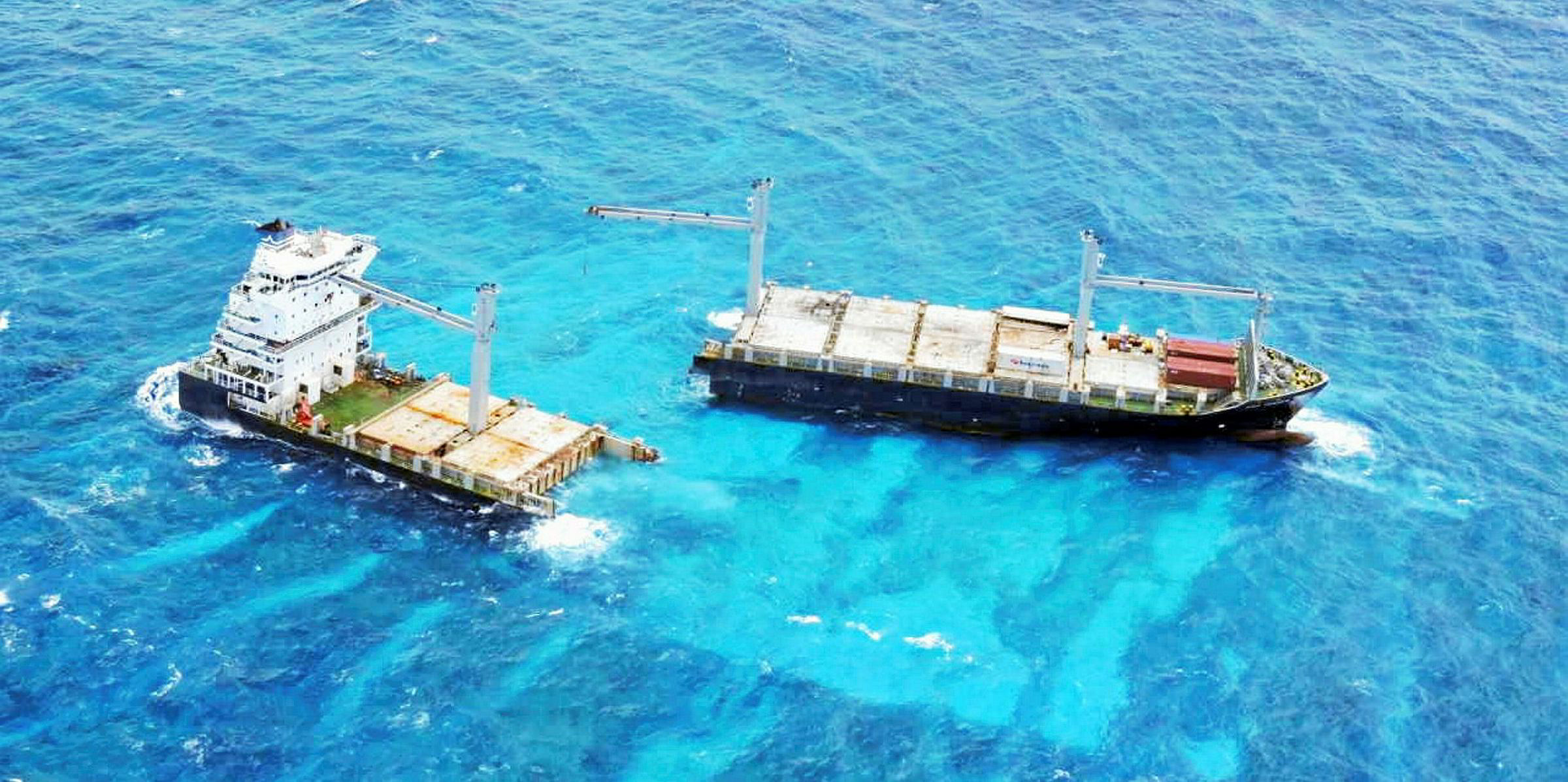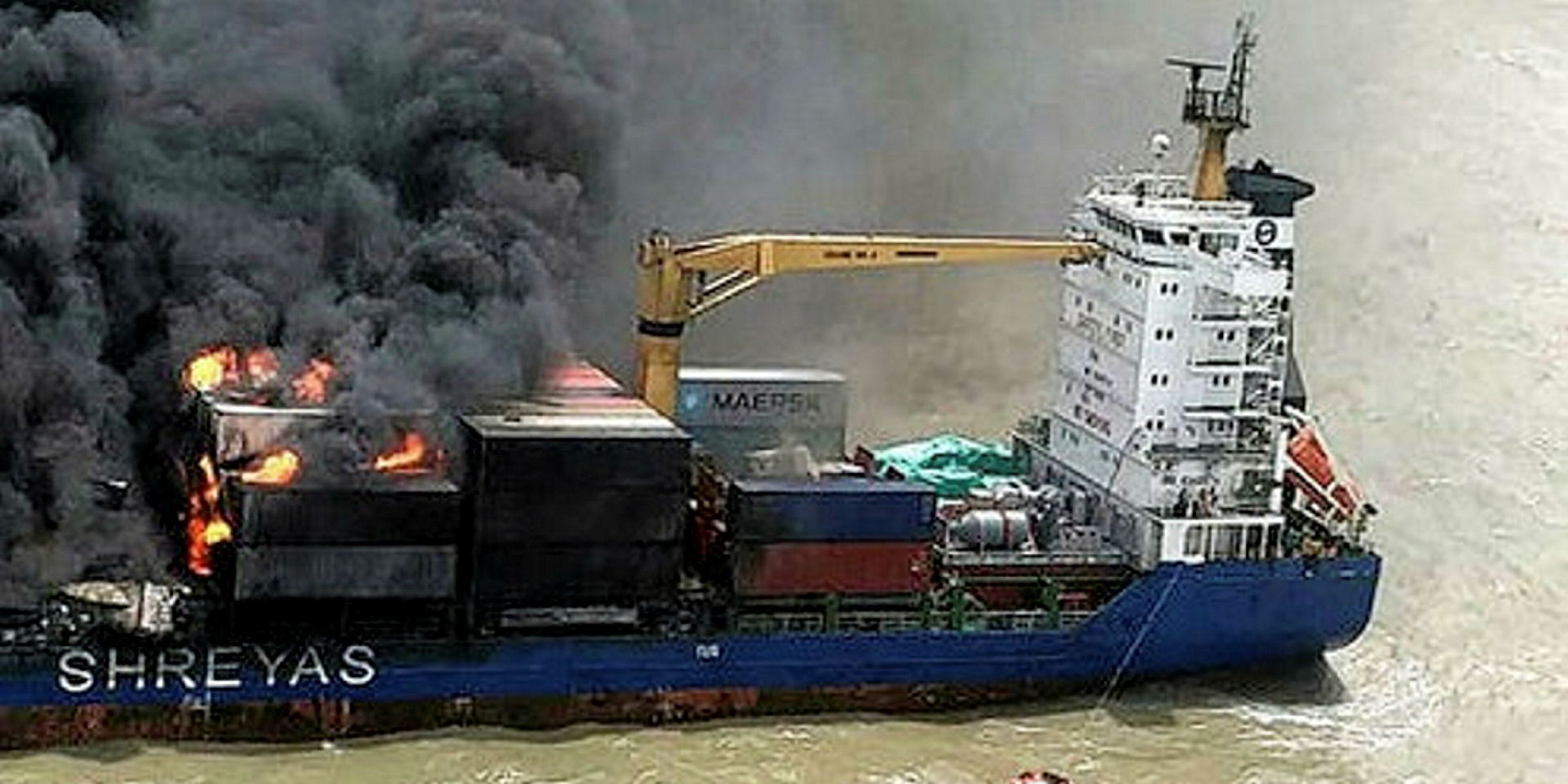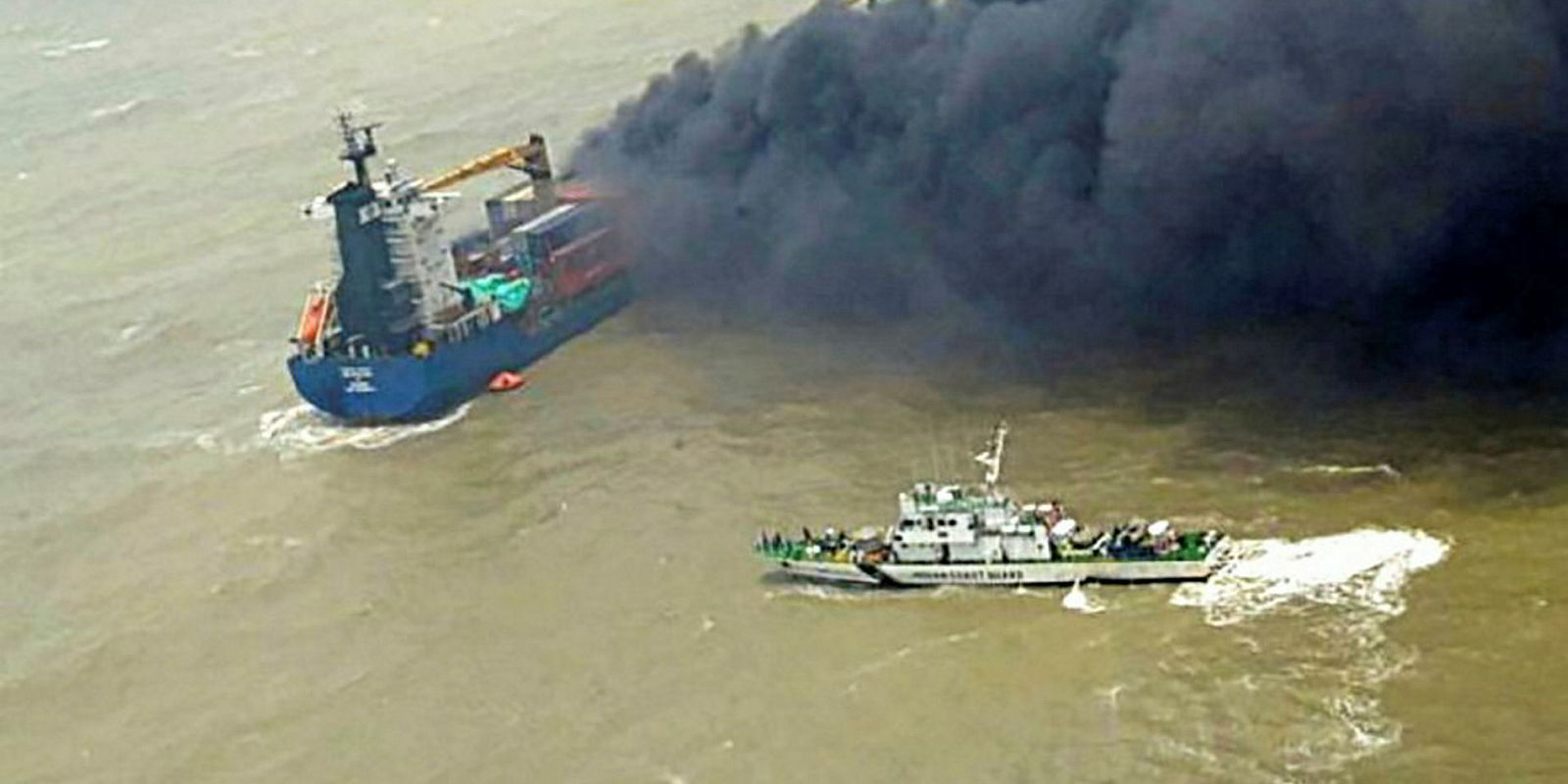Shanghai Salvage is negotiating with insurers for the contract to remove the wreck of the stricken containership SSL Kolkata off the coast of India.
The state-owned salvage company’s proposal involves teaming up with a European partner, understood to be Dutch firm Smit Salvage.
Smit was appointed for the initial emergency-response Lloyd’s Open Form (LOF) contract and has equipment on site that was used in removing pollutants from the vessel.
Some salvors were reluctant to take on the job because of the stringent conditions laid out in the contract, they told TradeWinds. It is understood they are being asked to accept financial liability for any pollution caused during the removal.
Environmental sensitivity
In June, the 1,118-teu SSL Kolkata (built 2006) suffered a fire than ran aground near the mangroves of the Sundarbans UNESCO world heritage site, so there is extreme environmental sensitivity linked to the wreck removal. The Indian authorities are monitoring the situation for pollution and are closely involved with the salvage planning.
The contract is being managed by UK-based protection and indemnity insurer North P&I Club. The Newcastle-based mutual would not confirm if it is in talks with Shanghai Salvage. However, it said “contract negotiations are ongoing”, without identifying the company involved.
As TradeWinds recently reported, Shanghai Salvage has been targeting high-value wreck-removal work in recent years. It was selected for high-profile and technically demanding jobs, including the 6,825-gt ferry Sewol (built 1994) and 2,194-teu containership Kea Trader (built 2017).

Industry sources said Shanghai Salvage has an advantage over other salvage companies because it belongs to the Chinese state. Having the financial backing of the government of the world’s second-largest economy makes Shanghai Salvage one of the few companies that can accept the potential financial liabilities of environmental damage as a result of the work, which could prove catastrophic for other firms.
However, despite its recent success, Shanghai Salvage has run into difficulties in its attempt to remove the wreck of the Kea Trader, which has broken in two on the Durand Reef in the South Pacific after grounding in July 2017.
Weather problems
Difficult weather conditions, the remoteness of the wreck — which is located 130 nautical miles (240 kilometres) from the nearest port — and the natural degradation of the hull have hampered its salvage.
“A debris field between the forward and aft sections of [the] vessel and their angle of list is limiting the ability to safely board to only a few days per month in calm seas,” owner Lomar Shipping told TradeWinds.
During the current six-month cyclone season, the command platform 19,063-gt Ju Li (built 2012) has been demobilised. But two offshore supply and response vessels — the 2,895-gt De Jin (built 1999) and 1,637-gt Hua Ao (built 2005) — are on site to monitor the conditions and undertake further work on site, including the recovery of debris from the reef surface.

So far, 280 separate steel hull pieces weighing almost 120 tonnes have been removed and sent to New Caledonia for recycling.
Shanghai Salvage is building a new shallow-draught heavylift vessel, which it hopes to deliver to the site next year to help with the salvage operation.






